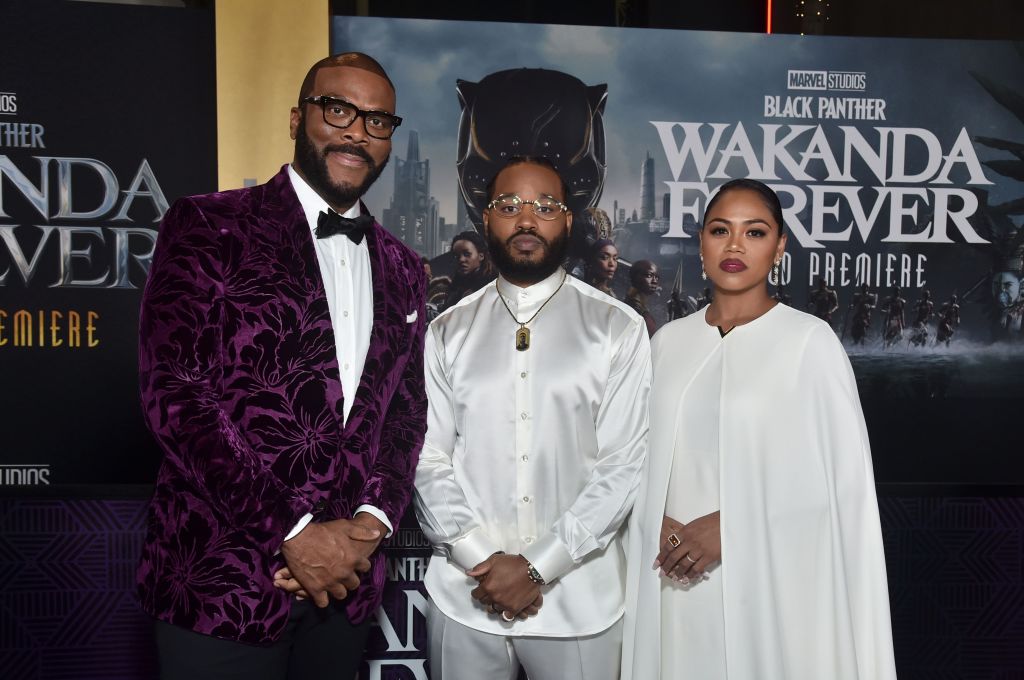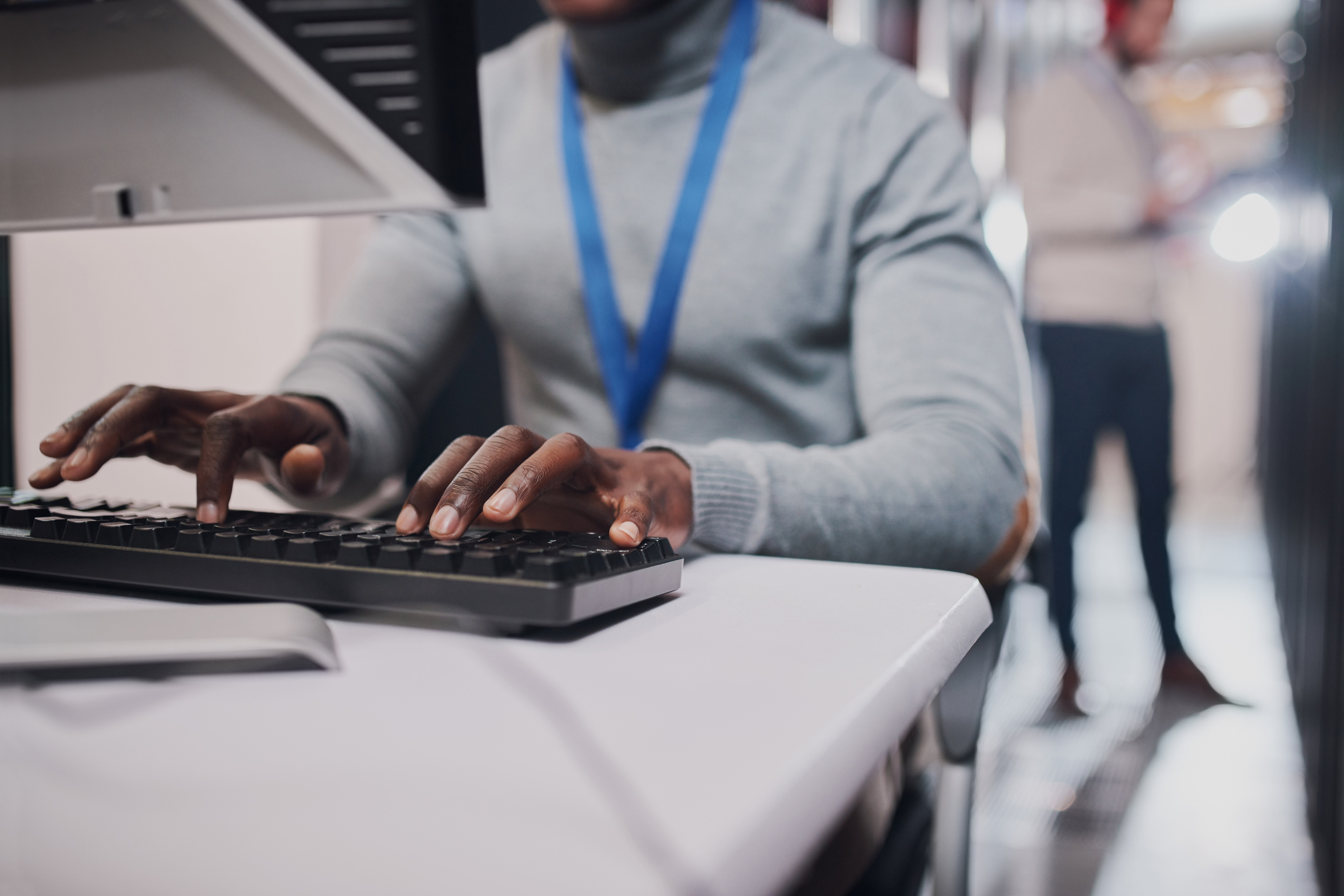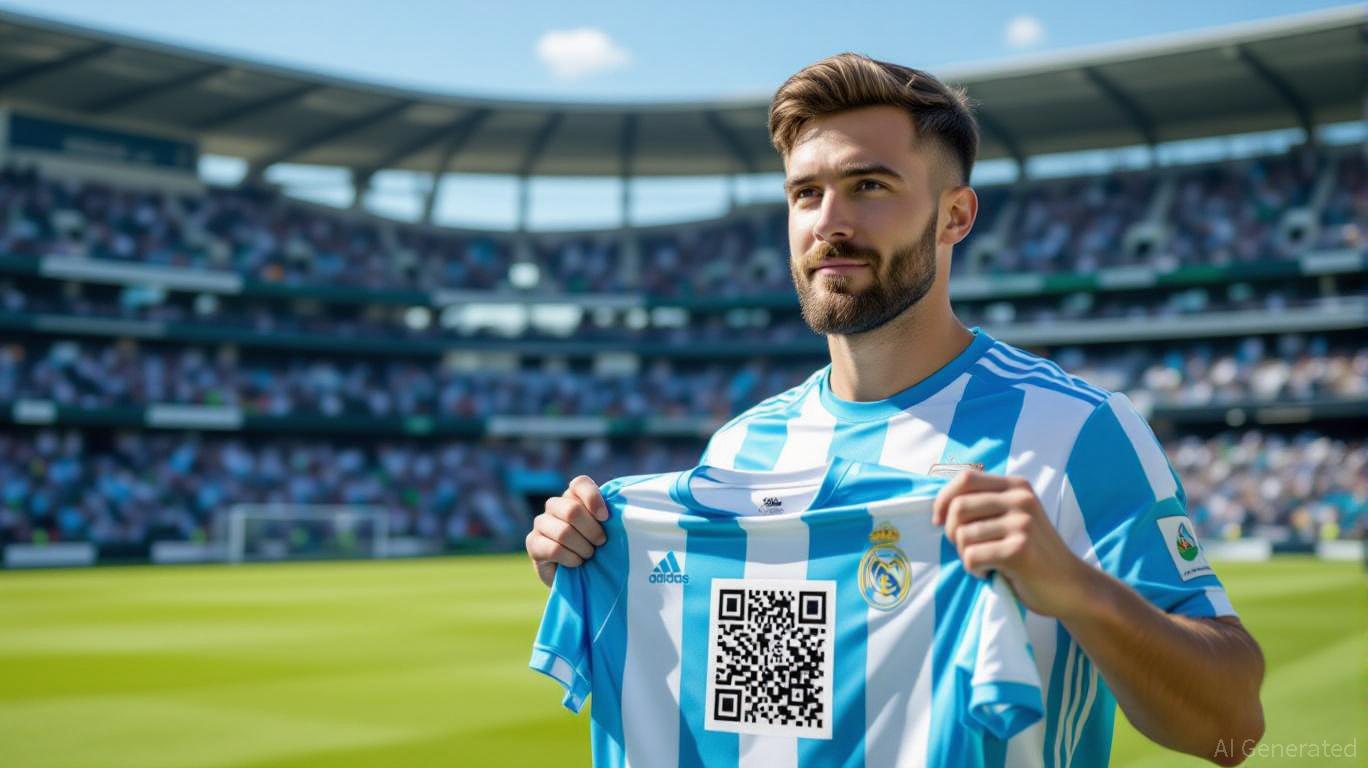Disney-owned shows originating from Hudson Square
“Get Up”
“First Take”
“Unsportsmanlike”
“The View”
“Live with Kelly and Mark”
“Good Morning America”
“Tamron Hall”
The Razer DeathAdder V4 Pro is an upcoming peripheral engineered by the gaming-focused tech brand to support the needs of avid eSports fans like. The gaming mouse debuts the brand’s first use of an optical scrolling wheel instead of a mechanical one that’s reported to increase overall precision, durability and consistency. The mouse also features […]

The gaming mouse debuts the brand’s first use of an optical scrolling wheel instead of a mechanical one that’s reported to increase overall precision, durability and consistency. The mouse also features optical switches that have been newly designed with a crisp feedback in mind and are rated for up to 100-million clicks. The mouse is paired with an upgraded wireless transmitter over the previous model to offer a 63% increase in power efficiency and a latency decrease of 37%.
The Razer DeathAdder V4 Pro is priced at $170 and is available now for preorder in two color options that will start shipping July 24, 2025.
Image Credit: Razer
Tyler Perry played a hand in Ryan Coogler securing a groundbreaking deal. Award-winning director Coogler released “Sinners” in theaters on April 18. According to Forbes, the horror film, which had a $90 million production budget and featured Michael B. Jordan, Hailee Steinfeld, and Miles Caton, garnered $365.9 million worldwide. The film marked a reset for […]

Tyler Perry played a hand in Ryan Coogler securing a groundbreaking deal.
Award-winning director Coogler released “Sinners” in theaters on April 18. According to Forbes, the horror film, which had a $90 million production budget and featured Michael B. Jordan, Hailee Steinfeld, and Miles Caton, garnered $365.9 million worldwide. The film marked a reset for Coogler, who previously worked on sequels for “Black Panther” and “Creed.”

Beyond the plot and visual storytelling of “Sinners,” Coogler also made headlines for the business deal he secured for the film with Warner Bros. The New York Times reports he was given a portion of gross ticket sales before the studio takes its cut, an arrangement that was more common in the past for prominent stars and directors. As AFROTECH™ previously reported, Coogler will also secure final cut rights (removing the studio’s final say in certain editing and directing choices) as well as full ownership of the film in 25 years. Additionally, he earned a percentage of “Sinners’” box office return immediately when it was released. The deal could reportedly earn Coogler millions for generations in the future.
What’s more, Perry reportedly played a key role in encouraging Coogler to take this approach with his film. Perry himself owns the intellectual property of his projects, which include over 1,200 episodes of television, 22 feature films, and at least 24 stage plays, per BET.
“Everybody’s talking about the ‘Sinners’ deal. He got this amazing deal. Listen, I called that brother up, as I did a lot of them, I called him up after ‘Black Panther’ and I said, ‘Listen, here is how you do it,’” Perry shared on the “Den of Kings” podcast. “The deal that he has, my first movie, it’ll be 20 years this year from ‘Diary of a Mad Black Woman.’ I called him up and said, ‘Here is how you do that deal.’ And to see that they were able to pull it off. I applaud him, man. I’m excited for him because that’s what it’s about. Holding on to the ownership.”
One of ESPN’s first visitors to its new studios for flagship programs “Get Up” and “First Take”? That would be Whoopi Goldberg. Turns out, one of the hosts of “The View” is a big sports fan, and her show tapes just down the hall from ESPN’s morning shows at Disney’s new Manhattan digs. In the […]

One of ESPN’s first visitors to its new studios for flagship programs “Get Up” and “First Take”? That would be Whoopi Goldberg. Turns out, one of the hosts of “The View” is a big sports fan, and her show tapes just down the hall from ESPN’s morning shows at Disney’s new Manhattan digs.
In the basement of the new Hudson Square building, near SoHo in Lower Manhattan, you can find studios for “First Take,” “Get Up,” “Unsportsmanlike,” “The View,” “Live with Kelly and Mark,” “Tamron Hall” and “Good Morning America” — the first time Disney united the ESPN and ABC live shows under one roof.
ESPN vacated its Seaport Studios NYC home earlier in 2025 after seven years. “Get Up” debuted from its new studio on June 9, and “First Take” followed from the studio next door on June 23. The Disney side departed its uptown offices and studios slightly earlier, with “The View” its first studio show to broadcast from the new home.
“There’s this new level of integration that comes from being within a Disney building like that,” said Mike Foss, ESPN senior vice president, studio and entertainment. “The first month has been exceptional, but we’re really only beginning to tap into the potential of that space, which is really exciting.” Foss is a 2025 SBJ Forty Under 40 honoree.
“Get Up”
“First Take”
“Unsportsmanlike”
“The View”
“Live with Kelly and Mark”
“Good Morning America”
“Tamron Hall”
The hope is for more cross-pollination between ESPN and Disney talent on-air, especially with the proximity of the studios. Joe Buck and Malika Andrews have appeared on “Good Morning America,” and other ESPN shows are jockeying for guest appearances at Disney’s new New York headquarters, officially named the Robert A. Iger building.
In less than two months since its opening, “Sunday Night Baseball: Statcast Edition,” “NBA Today” and “ESPN FC” can all claim to have aired from 7 Hudson.
“One of the goals when we opened Seaport was to make it a true content factory,” said Chris Calcinari, ESPN senior vice president of content operations, noting that over the years shows including “SportsCenter,” “NFL Countdown” and “NBA Today” all broadcast from the downtown studios.
“Our goal is just to create the same environment at 7 Hudson, where all those shows get excited to come to New York. I’m really looking forward to the fall and seeing what else we can do there,” said Calcinari.
Much of the 19-story, 1.2 million-square-foot building is glass, bringing in plenty of natural light. A cafeteria and common space houses a Starbucks, and that area can also be used to host live studio shows. 7 Hudson also has a large screening room and a company store.
Disney signed a 99-year, $650 million lease for the space in 2018. Four existing structures were demolished, making way for Disney’s complex, which now takes up an entire city block.
On a Thursday morning in July, the ladies of “The View” walked past the studio for “Get Up” heading to the green room. According to folks at ESPN, it’s not uncommon to see guests and talent from the ABC shows, as green rooms are shared.
“You can’t plan for that stuff or design for that stuff, but the fact that you have all these elements together, you’re inviting this chemistry to just manifest organically,” said Foss.
A lot of ESPN talent tends to take time off in July, which typically is a slower sports month. The day Sports Business Journal was on set, Dan Graziano filled in for Mike Greenberg on “Get Up,” and Courtney Cronin subbed in for the “First Take” crew. NBA talk was heavy in both shows, with topics including Cooper Flagg’s Summer League debut (and the price of a ticket), and Nikola Jokic’s future.
The studio for “Get Up” pays homage to New York, with memorabilia from the subway scattered throughout. Of course, Greenberg’s Northwestern football jersey is framed.
“You step into both of those studios now, and they really embody and reflect the shows,” said Foss. “We’ve had a really nice runway to build and prepare for this move, and you really see it manifest in the finished set pieces.”
Calcinari concurred, saying the “Get Up” studio “screams New York,” adding, “We’re really trying to make that studio look like New York, with subway tiles and the LEDs displaying scenes of New York City.”
“First Take” has three distinct looks and utilizes 360-degree camera angles while shooting, making it more difficult for visitors to observe filming than “Get Up.”
Those looks include the main “First Take” desk area, which is shot in the round with a large LED wall behind them to support scenic, graphic or video elements. Then there’s the South Wall area, which the show used for “NBA Today” during the NBA Draft. That spot also has a large LED wall. The third is the West Wall, which has an LED wall that talent can either be seated or stand in front of.
While Seaport had been a good home for ESPN, the company had essentially maxed out its possibilities, and got major upgrades at Hudson Square. It also no longer has to compete with rooftop concerts at Pier 17.
“We’re in a much-improved technical facility,” said Calcinari, adding that the studio can do UHD (ultra high definition) and HDR (high dynamic range).
Both ESPN studios are the same size (2,100 square feet), and slightly smaller than Seaport. Both heavily use LED, a difference from Seaport. The studio for “Get Up” kept essentially the same design and look as its old home, but has an LED floor and a curved LED wall with a touch screen. The use of LED is the biggest change from Seaport, with both studios essentially LED screens all the way around, moving from the natural scenery to LED.
Each show uses six cameras with a mix of robo, jib and handheld. The studios also utilize a remote integration production model, meaning the control rooms and production teams are in Bristol.
“The core guts of executing the show [are] still back in Bristol,” said Calcinari.
“From a communication standpoint, from a collaboration standpoint, both from the operation side and the content side and production side, because it’s a Disney building — the integration is just so much stronger and more aligned,” said Foss. “There were quirks that came with working out of Seaport — they were lovable quirks, but there were some hiccups and challenges to that.”
Added Foss: “Having all that streamlined, being able to have quick, immediate communication and infrastructure between Bristol and 7 Hudson, again, it’s [going to] make it so much sharper and more efficient in the way that we produce both of those shows, and other shows that obviously are going to come from there.”
The Hudson studios allow easier communication with ESPN headquarters in Bristol, where the bulk of the shows are still produced. According to Foss, a satellite studio such as Seaport existed “on its own island.”
“You [were] deprived of a lot of the other things that shows that are based in Bristol take advantage of all the time,” said Foss, pointing to ease in communicating with researchers, coordinating with talent bookers or bumping into Michael Strahan on your way to the cafeteria.
“There’s these intangible things that come from working in a bigger production space with other production groups and units that naturally afford you to elevate your own game and productions,” said Foss.
“There’s these intangible things that come from working in a bigger production space with other production groups and units that naturally afford you to elevate your own game and productions.”
— Mike Foss, ESPN senior vice president, studio and entertainment
There aren’t concrete plans to shift further production from Bristol to the new studios, but having the New York space does create ease in attracting talent, and also the benefit of being near major events, such as the FIFA Club World Cup earlier this month.
“It’s not so much we’re shifting more or all shows into that space, but just having the ability to make these timely strategic decisions and have a space that can accommodate [at] the snap of a finger, that’s a huge benefit,” said Foss.
The connected fitness industry has spent the past decade digitizing traditional gym experiences, streaming classes, tracking basic metrics, and building content libraries. But a new wave of AI-driven workouts is challenging this entire model with something that can’t easily be replicated: artificial intelligence that actually thinks during your training session. amp, a US-based fitness innovation […]

The connected fitness industry has spent the past decade digitizing traditional gym experiences, streaming classes, tracking basic metrics, and building content libraries. But a new wave of AI-driven workouts is challenging this entire model with something that can’t easily be replicated: artificial intelligence that actually thinks during your training session.
amp, a US-based fitness innovation startup, is launching what may be the industry’s most sophisticated AI Coach to beta users this month, with plans for broader deployment throughout 2025. Unlike existing smart home gym platforms that rely on pre-recorded content and static programming, amp’s adaptive fitness technology creates workout plans that evolve in real-time based on thousands of performance indicators.

Building effective AI-driven workouts requires solving problems that don’t exist in other AI applications. Unlike recommendation engines or chatbots, fitness AI must understand the dynamic relationship between human physiology and performance adaptation – variables that shift constantly based on sleep, stress, recovery, and dozens of other factors.
“Traditional fitness platforms treat performance fluctuations as noise to be filtered out,” explains a spokesperson for amp. “We treat them as essential metrics that inform better training decisions.”
When you complete an exercise, amp doesn’t just record weight and repetitions. The adaptive fitness technology analyzes movement velocity, range of motion consistency, rest period duration, and how these metrics compare to your historical patterns. This multidimensional approach creates AI-driven workouts that understand not only what you accomplished, but how efficiently you accomplished it.
Most fitness tracking operates reactively – documenting what happened after exercises are completed. amp’s AI Coach takes a predictive approach, using machine learning models to anticipate what your body needs next based on subtle performance indicators that precede conscious fatigue recognition.
The technical architecture processes multiple data streams simultaneously through computer vision systems that track movement patterns via smartphone cameras, electromagnetic sensors that monitor cable tension and velocity, and accelerometers that capture micro-movements indicating form breakdown or readiness for progression.
This creates feedback loops that operate on millisecond timescales, enabling the adaptive fitness technology to modify resistance patterns during exercises rather than between them. If movement velocity decreases beyond optimal ranges, the AI Coach can reduce load before form deterioration compromises safety or training effectiveness.
The sophistication of amp’s approach lies in its neural networks optimized for time-series biomechanical data. Unlike rule-based algorithms that follow predetermined decision trees, these models develop an increasingly nuanced understanding of individual user physiology over time.
The AI-driven workouts platform maintains detailed performance models across different exercises, recovery states, and environmental factors. When users begin sessions, the system already has predictive frameworks in place that account for likely performance based on training history, sleep data from connected wearables, and circadian rhythm patterns.
These predictions enable proactive programming adjustments. The adaptive fitness technology might pre-load lighter resistances if recovery indicators suggest suboptimal readiness, or recommend power-focused exercises when biomarkers indicate peak performance states.

amp combines this technical sophistication with coaching knowledge from fitness industry experts like Terry Crews, Chris Heria, and Kinga Strogoff. Rather than simply streaming pre-recorded content, the platform uses what they term “AI Avatar technology” to apply expert coaching principles to individual user situations in real-time.
The AI-driven workouts system understands the biomechanical rationale behind coaching decisions and adapts expert guidance to specific user capabilities and limitations. When Terry Crews emphasizes explosive movement patterns for power development, the adaptive fitness technology identifies optimal moments for these cues based on current user strength levels and movement quality.
The effectiveness of AI-driven workouts depends heavily on hardware capable of executing real-time decisions. amp’s electromagnetic resistance system can modify load patterns smoothly during individual repetitions – a capability that traditional mechanical systems cannot match.
Three distinct resistance modes demonstrate this integration: Band Mode simulates progressive resistance band behavior with real-time curve modifications based on user performance. Eccentric Mode adds load during lowering phases while modulating this additional resistance based on fatigue indicators. Fixed Mode maintains consistent challenge throughout movements but adjusts baseline resistance automatically based on form quality metrics.
This hardware-software integration enables adaptive workouts that feel responsive rather than predetermined, creating training experiences that evolve with user capability in ways that static programming cannot achieve.
amp’s approach represents a fundamental shift from content-driven platforms to intelligence-driven training. While competitors can hire celebrity instructors or improve video production quality, they cannot easily replicate machine learning systems that understand individual user physiology without significant infrastructure investment.
The company’s $1,795 device price point, combined with $23 monthly subscriptions supporting up to 15 household members, disrupts traditional smart fitness economics. Unlike content platforms where additional users don’t significantly enhance core experiences, amp’s AI-driven workouts become more valuable as they learn from diverse user patterns within the same household.
As amp continues to expand AI Coach capabilities throughout 2025, its adaptive fitness technology suggests a future where workout equipment genuinely understands user goals, limitations, and daily variations. This moves beyond tracking what happened to predicting what should happen next – a distinction that may define the next generation of fitness technology.
The engineering principles behind amp’s AI-driven workouts could eventually inform everything from physical therapy protocols to athletic performance optimization, demonstrating how sophisticated AI applications can emerge from solving real human problems rather than purely technical challenges. For an industry built on helping people achieve consistent progress, intelligence that adapts to human variability rather than ignoring it may be the most important innovation of all.
Prices and availability are accurate as of the time of publication and are subject to change without notice. Please check the retailer’s website for the most up-to-date pricing information.
VentureBeat newsroom and editorial staff were not involved in the creation of this content.
AI is rapidly transforming the job market. In tech, companies are cutting jobs. In other industries, however, professionals with AI skills are finding higher pay and new opportunities. A report by labor market analytics firm Lightcast, cited by Fortune, shows the shift is already in progress. The report, “Beyond the Buzz,” analyzed over 1.3 billion […]

AI is rapidly transforming the job market. In tech, companies are cutting jobs. In other industries, however, professionals with AI skills are finding higher pay and new opportunities.
A report by labor market analytics firm Lightcast, cited by Fortune, shows the shift is already in progress. The report, “Beyond the Buzz,” analyzed over 1.3 billion job postings. It found that while some tech roles are declining, demand for AI skills is rising in marketing, education, finance, and human resources.
Over the past year, tech companies have cut jobs while expanding their AI investments, Crunchbase reports.
Automation is taking over roles in software development, IT support, and administration. Fortune reports that up to 80,000 workers have been affected. Microsoft alone has cut 15,000 jobs while investing $80 billion in AI, the outlet states.
Lightcast data confirms the trend. AI-skilled jobs in IT and computer science dropped from 61% in 2019 to 49% in 2024, per the report. While total AI job postings are increasing, fewer are based in traditional tech departments.
In 2024, over half of AI-related job postings appeared in non-tech sectors, according to Lightcast. On average, these offer a salary increase of $18,000 per year — a 28% boost compared to similar jobs without AI requirements.
Fortune notes that listings requiring two or more AI skills can offer up to 43% higher salaries. Demand is growing fastest in marketing, sales, customer support, and manufacturing.
The use of tools like ChatGPT, Microsoft Copilot, and DALL-E has exploded — especially in creative and customer-facing roles where AI can support everything from writing ad copy to streamlining customer service requests, the outlet reports.
Additional Lightcast findings, per Fortune, report that generative AI was cited in more than 66,000 job postings in 2024, marking an increase of nearly four times that of the previous year.
Despite automation, employers still value human skills. According to Fortune, the top non-technical traits mentioned in AI-related job listings include communication, leadership, problem-solving, and research.
“While generative AI excels at tasks like writing and coding, uniquely human abilities—such as communication, management, innovation, and complex problem-solving—are becoming even more valuable in the AI era,” the report says.
According to Fortune, experts agree that AI fluency is becoming essential in the workplace. Christina Inge, founder of Thoughtlight, says workers who can prompt tools, fix errors, and interpret AI outputs bring added value to employers.
In fields such as customer service and sales, AI tools are being used to support interactions with clients and improve workflow efficiency. “That combination of human judgment and AI fluency is hard to find and well worth the extra pay,” Inge told Fortune.
The financial effects of AI skills differ by industry. In an interview with Fortune, Cole Napper, vice president of research, innovation, and talent insights at Lightcast, said the data showed no clear pattern across sectors. He did note that roles in the arts appeared frequently among positions listing AI skills.
Napper also told Fortune that ignoring AI trends may reduce earning potential. Lightcast plans to release a more detailed income breakdown in future research.
Taiwan Semiconductor (NYSE: TSM) is currently valued at around $1.25 trillion, making it the ninth-largest company in the world. Normally, investors don’t expect these large companies to produce outstanding growth, as the larger a business gets, the more difficult it becomes for it to grow. However, TSMC has monster growth projections on the table, as […]
Taiwan Semiconductor (NYSE: TSM) is currently valued at around $1.25 trillion, making it the ninth-largest company in the world. Normally, investors don’t expect these large companies to produce outstanding growth, as the larger a business gets, the more difficult it becomes for it to grow. However, TSMC has monster growth projections on the table, as well as a new technology that could drive shares much higher.
Rising from today’s $1.25 trillion valuation to a $3 trillion valuation would require a 140% return. However, management believes there’s plenty of growth in store for Taiwan Semiconductor to meet this threshold.
Taiwan Semiconductor is the world’s leading semiconductor foundry. Its business strategy is to offer its clients best-in-class chip production technologies, and not compete against them. This business model has worked out incredibly well for TSMC, and its customer list ranges from Nvidia to Apple to Tesla. If you have a cutting-edge technology device, it’s likely that it contains a chip manufactured by Taiwan Semiconductor.
One of the reasons TSMC established itself at the top of its industry is its dedication to driving the next greatest innovation. In recent chip launches, Taiwan Semiconductor outpaced its peers by offering the most advanced technology available first. That doesn’t seem to be changing, as it has some promising technology in the pipeline.
Later this year, Taiwan Semiconductor is expected to launch its N2 chip node, indicating 2nm (nanometer) spacing between traces. The pre-launch demand for the N2 node exceeds that of the 3nm and 5nm offerings. This is big news for Taiwan Semiconductor, as the improvements this generation offers are substantial enough that many companies are designing their products around this new technology.
The biggest improvement the N2 offers its users is energy efficiency. This has implications for the smartphone industry, with longer-lasting phones being more desirable. Additionally, the energy consumption of AI computing devices to run generative AI prompts is becoming a front-and-center topic. When N2 chips are configured at the same processing speed as 3nm chips, they consume 25% to 30% less energy. That’s a massive improvement, and the energy savings from these chips may warrant upgrading to new computing units.
The global sports industry is undergoing a seismic shift. No longer just about entertainment or revenue, it is becoming a battleground for ethical labor practices and environmental stewardship. For investors, this transformation presents a golden opportunity: companies aligning with ESG (Environmental, Social, and Governance) criteria through labor reforms and fan sentiment shifts are not only […]

The global sports industry is undergoing a seismic shift. No longer just about entertainment or revenue, it is becoming a battleground for ethical labor practices and environmental stewardship. For investors, this transformation presents a golden opportunity: companies aligning with ESG (Environmental, Social, and Governance) criteria through labor reforms and fan sentiment shifts are not only attracting capital but also reshaping the very fabric of sports.
The demand for ethical labor practices in sports venues is no longer a niche concern. From stadium workers to athletes, the push for fair wages, safe conditions, and inclusive policies is gaining momentum. The Paris 2024 Olympics, for instance, has committed to halving its carbon footprint compared to past games, while ensuring that all contractors adhere to strict labor standards. This includes fair pay for event staff and partnerships with local unions to protect workers’ rights. Similarly, Wimbledon’s pledge to achieve net-zero emissions by 2050 includes labor reforms such as training programs for staff to reduce waste and improve energy efficiency.
Nike and Adidas, two titans in sports apparel, have also made strides. Nike’s 2023 Sustainability Progress Report details partnerships with the Fair Labor Association (FLA) to audit factories and improve worker conditions. Adidas, meanwhile, has integrated GOTS-certified materials into its supply chain, ensuring both environmental and labor ethics. These initiatives are not just corporate gestures—they are strategic moves to align with a growing base of socially conscious consumers.
The rise of Gen Z and millennial fans has further accelerated this shift. These demographics prioritize brands that reflect their values, and they are willing to pay for alignment. A 2024 study by ESG in Sports revealed that 72% of fans prefer teams and leagues that promote sustainability and ethical labor. This has led to a surge in demand for “shoppable” content—social media campaigns that let fans purchase eco-friendly merchandise while learning about a team’s ESG goals.
Take the Portland Timbers, an MLS team that partnered with Fair Trade Certified manufacturer Alta Gracia to produce ethically sourced gear. The move not only boosted the team’s reputation but also drove a 40% increase in merchandise sales. Similarly, the UCI’s collaboration with Shimano to create eco-friendly cycling events has attracted sponsors like Patagonia, whose ESG-aligned branding resonates with their target audience.

For investors, the financial implications are clear. Companies that integrate ESG into their operations are outperforming peers in valuation premiums and long-term stability. A 2024 study by the EU Green Sports Expert Group found that sports organizations with strong ESG performance saw a 22% higher return on investment compared to those without. This is driven by lower operational risks, stronger brand equity, and access to green financing.
Consider the case of the International Olympic Committee (IOC), which has embedded ESG into its governance framework. The IOC’s “Sports for Climate Action” initiative, with over 200 signatories, has not only reduced emissions but also attracted partnerships with ESG-focused investors. The framework’s requirement for annual public reporting ensures transparency, a key factor for institutional investors prioritizing ESG compliance.
While the trend is undeniable, investors must remain cautious. Greenwashing—a practice where companies overstate their ESG credentials—remains a risk. For example, some leagues have faced criticism for vague sustainability claims without actionable labor reforms. To avoid this, investors should focus on companies with third-party certifications (e.g., GOTS, Fair Trade) and transparent reporting.
Another challenge lies in balancing short-term costs with long-term gains. Ethical labor reforms, such as fair wages and sustainable sourcing, can strain profit margins. However, the data suggests these costs are offset by increased consumer loyalty and regulatory compliance. For instance, the Singapore Rugby Union’s partnership with HSBC to ensure gender parity in the Sevens Series has not only enhanced its ESG profile but also attracted new sponsors seeking to align with inclusive brands.
The sports industry’s pivot toward ESG is not a passing fad—it is a structural shift. As labor reforms and fan sentiment continue to evolve, investors who prioritize ethical companies will reap the rewards. Key players like Nike, Adidas, and UCI are setting benchmarks, but the real opportunity lies in early-stage ventures leveraging technology to solve ESG challenges.
For example, startups using AI to monitor supply chain labor conditions or platforms that connect fans with carbon-offset initiatives are emerging as disruptors. These innovations could redefine how sports organizations engage with stakeholders, creating new investment avenues.
In conclusion, the rising demand for ethical labor practices in sports is not just a moral imperative—it is a financial one. By investing in companies that align with ESG trends, investors can capitalize on a market that values sustainability, inclusivity, and long-term resilience. The future of sports is not just about winning games; it’s about winning the trust of a generation that demands more from the brands they support.


Why a rising mid-major power with an NCAA Tournament team opted out of revenue-sharing — and advertised it


New 'Bosch' spin


EA Sports College Football 26 review – They got us in the first half, not gonna lie


CAREGD Trademark Hits the Streets for Mental Health Month


Volleyball Releases 2025 Schedule – Niagara University Athletics


Will Giannis DEPART Milwaukee⁉️ + How signing Turner & waiving Dame impacts the Bucks | NBA Today


Adapti, Inc. (OTC


New NCAA historical database provides wealth of information on championships


Buford DB Tyriq Green Commits to Georgia


FREE AGENCY BREAKDOWN 🚨 What moves can the 76ers make? 🤔 | NBA Today